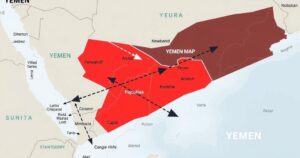Santorini Declares State of Emergency Following Earthquake Swarm

Greece has declared a state of emergency on Santorini due to increased seismic activity, including a magnitude 5.2 earthquake. Emergency services have been mobilized, with thousands evacuating to the mainland. Schools and public events have been canceled as a precaution. Experts confirm the seismic activity is not related to volcanic threats in the region.
Greece has declared a state of emergency on the renowned tourist island of Santorini due to an increase in seismic activity, which has persisted for nearly a week. The situation escalated with a magnitude 5.2 earthquake occurring late on Wednesday, marking the most significant tremor since the onset of the seismic swarm on January 31. This emergency declaration aims to facilitate swift access to state resources and assistance for the affected region.
Government officials have mobilized emergency services to the island, with Government spokesman Pavlos Marinakis assuring that fire departments, police, the coast guard, armed forces, and emergency medical services will deploy additional personnel and specialized equipment to reinforce support.
Although the earthquakes have caused minimal infrastructure damage, they have led to thousands of locals and seasonal workers evacuating to the Greek mainland by ferry. Schools across 13 islands have closed, public events have been canceled, and travel to Santorini has been restricted, impacting tourism operations.
Dramatic videos shared on social media show dust clouds rising from landslides on the island’s steep ridges, which carry the picturesque white buildings. A local resident informed The Independent that conditions in Santorini remain “calm,” and that residents are adhering to the guidance provided by local authorities.
Currently, Fira, the main town of Santorini, is unusually quiet except for a few small tour groups, predominantly from Asia, who are taking advantage of the relatively deserted island. Greece, situated at the intersection of the African and Eurasian tectonic plates, is recognized as one of Europe’s most earthquake-prone countries, with Santorini having faced notable seismic activity in its history, including a significant volcanic eruption around 1600 BC, though it has not erupted since 1950.
Experts assert that the current seismic activity is disconnected from any volcanic occurrences in the Aegean Sea, which may provide some reassurance to the public as authorities continue to manage the situation effectively.
The topic of seismic activity in Santorini is particularly relevant given the island’s geological history and its status as a popular tourist destination. Situated on the intersection of major tectonic plates, Greece frequently experiences earthquakes. Previous seismic incidents have had profound effects on both local residents and the tourism industry. The government’s proactive emergency measures reflect an effort to safeguard both residents and visitors during this unsettling period, highlighting the ongoing geological dynamics that characterize the region.
In conclusion, Santorini’s declaration of a state of emergency amid a series of undersea tremors emphasizes the need for immediate government intervention to protect its residents and assist evacuations. With minimal damage reported, the swift response from authorities showcases their dedication to maintaining safety, even as the island faces significant challenges. The ongoing seismic activity, while concerning, is regarded as not related to volcanic threats, allowing for hopeful resolution as the situation develops.
Original Source: www.independent.co.uk








